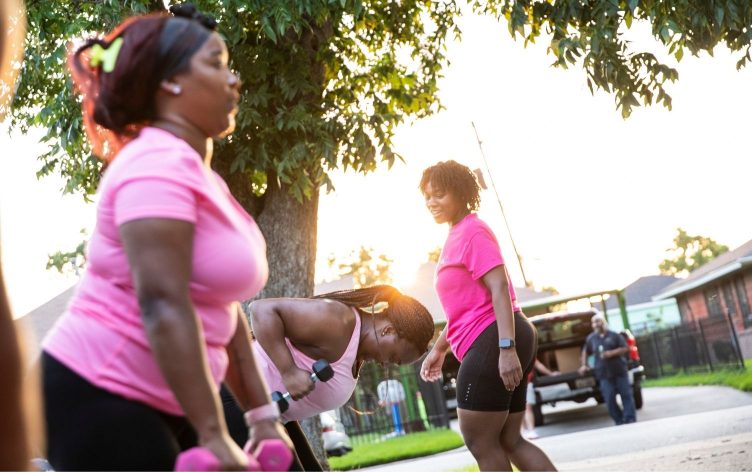Ever heard of anulom vilom? Maybe you’ve seen people do it or even tried it yourself in a yoga class. Or autogenic training? You’ve probably heard of this one but are unsure what it involves. Keep reading to learn about effective relaxation techniques you can practice at home to calm your mind and heal your body.
The benefits of relaxation techniques are not limited to mental health. Regular practice will help you sleep like a log, weather emotional storms like an oceanliner, and generally give your happiness meter a boost. As we know, your physical and emotional health are closely intertwined. By implementing the techniques below, you can make the most out of this relationship.
3 Relaxation Techniques
1. Controlled breathing or yogic breathing
Anulom Vilom Pranayam, also known as alternate nostril breathing, is one of several breathing exercises used in Hatha yoga. Anulom Vilom helps people develop patience, reduce stress, and improve brain, respiratory, and cardiovascular health.
How to: Sit in a comfortable meditation position with your spine and neck straight and your eyes closed. Rest your wrists on your knees to begin. Lift your right hand and fold in your index and middle fingers. Your thumb will close your right nostril and your ring finger will close your left. Open your right nostril by releasing your thumb and inhale deeply, filling your lungs. Close your right nostril and open your left, exhaling through your left nostril. Then reverse the process.
Try to keep your mind empty and practice this breathing technique for one minute to begin with. Stay relaxed and only increase the length of this practice when you’re ready.

2. Progressive relaxation techniques
Progressive muscle relaxation is a process in which you tense a group of muscles as you inhale and release them as you exhale. This technique is often used as a complementary treatment for a variety of health conditions. Research proves that progressive muscle relaxation is not only effective for pain management, but also reduces fatigue in patients with type 2 diabetes.(1)
How to: Find a quiet place to relax where you won’t be disturbed. Focus your mind on your forehead while keeping the rest of your body relaxed. Squeeze the muscles in your forehead and hold them for 15 seconds. Then relax, counting to 30. Notice how the muscles feel different as you release them. Breathe evenly throughout the exercise. Move on to your jaw, your neck and shoulders, arms, hands, buttocks, legs, and feet. Do not move on to the next muscle group until the previous one is completely relaxed. Keep your breathing regular and calm.

3. Autogenic training
Autogenic training (AT) is a relaxation technique of self-hypnosis that uses your body’s own natural response to cope with stress and anxiety. It influences the body’s autonomic nervous system like yoga and meditation do. Autogenic training focuses on inducing heaviness in the body, feelings of warmth, awareness of the heartbeat, and noticing the coolness of the forehead. The aim is passive concentration focusing on bodily sensations, which distinguishes AT from techniques like progressive muscle relaxation, in which the aim is to control physiological functions in order to relax.
During autogenic training, verbal cues are repeated to trigger a state of relaxation. Sessions usually last 15 to 20 minutes and should be practiced daily. It is advisable to use an audio guide to direct you with cues; this will allow you to fully relax.

How to:
- Find a quiet place to sit and practice abdominal breathing for a few minutes. Quietly say to yourself, “I am completely calm.”
- Focus your attention on each arm and repeat to yourself, “My right arm is very heavy” six times. Then say “I am completely calm” once. With your attention still on your arms, say, “My right is very warm” six times, followed by “I am completely calm” once. Repeat with your left arm.
- Focus your attention on your legs, repeat “My right leg is very heavy” six times and “I am completely calm” once. Then say “My right leg is very warm” six times, followed by “I am completely calm” once. Repeat with your left leg.
- When you focus on your heart, repeat “My heartbeat is calm and regular” six times and “I am completely calm” once.
- Then repeat “My breathing is calm and regular” six times and “I am completely calm”.
- The next focus area is your abdomen. Repeat “My abdomen is warm” six times and “I am completely calm” once.
- Finally, move to your forehead and repeat “My forehead is pleasantly cool” six times and “I am completely calm” once.
- At this point you should have reached a state of deep relaxation. Enjoy the heaviness of your limbs and steadiness of your breathing.
Benefits of Practicing Relaxation Techniques
Cardiovascular health
Calming your mind is not just about stress relief –– although that is a major benefit and common motivator for practice. Did you know that regular yogic breathing has been successful in reducing heart palpitations?(2) Meditation and yoga have been shown to have a positive effect on lowering blood pressure among patients with hypertension.(3) This is largely attributed to the fact that stress can cause hypertension and, as a result, reducing stress can reduce hypertension.(4)
Mental health
The connection between relaxation techniques and mental health is clear. The three techniques listed above have shown success in the treatment of stress, anxiety, and depression. The most effective approach, however, may be to combine relaxation techniques as a complementary measure with pharmacotherapeutic treatment.
Important
If you or someone you know struggles with anxiety and/or depression to the degree that it gets in the way of daily life, talk to a medical professional. Don’t try to treat this serious condition on your own.
Our world has changed since the pandemic began, resulting in greater stress and anxiety for many, as well as new and unfamiliar health challenges. Some of these challenges have been addressed using the established relaxation techniques described above. A recent study conducted on university students in Spain during the COVID-19 pandemic has shown that relaxation techniques including autogenic training, abdominal breathing, and visualization are an effective alternative to treating anxiety with pharmaceuticals.(5)
Sleep quality
The quality of your sleep has a significant impact on your overall health –– not to mention your exercise performance. Research comparing different treatment techniques found that improving sleep hygiene and practicing progressive muscle relaxation techniques were effective in reducing insomnia.(6)
Progressive relaxation has proven to be particularly effective for COVID-19 patients, who suffer from sleep disturbances and insomnia but cannot be administered sleep-promoting drugs, due to the depressive effect on respiratory function.(7)
Did you know?
Exercising in the evening can have a negative impact on your sleep that night. Find out what else could be ruining your sleep.
***













